|
Image from: http://zenopusarchives.blogspot.com/ You should check his blog out.
Las week I finally broke down and purchased Lawrence Schick's book: Heroic Worlds. https://www.edelweiss.plus/#keywordSearch&q=heroic+worlds&page=1 People often tell me that I should read ___ Fill in blank with name of book here ___. Yet, making a film is much different from making a book. Film making lends itself to creating new documents for the historical record in the form of interviews that can be preserved for future generations. A movie is a collection of ephemeral moments that have been stitched together to tell a story, yet the movie itself is not ephemeral because it exists in time and can be seen over and over. The Family Album of RPG History Shooting interviews is like making a family album of everyone who was there when something happened, and their first person accounts are much richer than mere photographs. If you consider the experience one has if their family was fortunate enough to make home movies of holidays and events on super 8 movie film, or even early video recorders; even silent films give one a peak at how someone is because, you can watch how a smile forms on their face, and the look in their eyes.
Image taken from: https://www.youtube.com/watch?v=mqaSOw1WhjI
What is your feeling about this film of Samuel Clemens and his daughters? Secrets of Blackmoor is not a book report. It is a shared observation in real time. We apply anthropological methods in order to grasp underlying concepts about the gaming culture in the Twin Cities. More importantlty, we bring you as a viewer into the room with us, so you can get to know all of these people, and see their expressions and hear their voices. We hope that you will feel like you've gotten to know them a little bit.
Another video example of how films preserve the ephemeral - taken from Secrets of Blackmoor
We intentionally did not read other history books about the creation of D&D. Conducting our own research and gathering interviews was a freedom we wanted to preserve as long as possible. Yet over time, we've ended up talking to other historians and we can share and compare views, not to mention artifacts within each other's collections. And we now read their books in order to glean new theoretical concepts that could change our own research. Much of what historians are doing within research has to do with looking at game rules, articles, and ephemera from games. We do this as well, it can reveal a lot, yet we also try not to get sucked into looking only at documents because we feel that RPG's are so much more than just a set of rules. Appreciating the Ephemeral I tend to skim books at first and just hunt and peck at passages until I run into a compelling idea. Consider what Mr. Schick says on Page 15:
"The fact that role-playing is not generally recognized as art, despite millions having participated in role playing games, is largely because role-playing is an ephemeral art -- it exists only while a game is in progress.
There are other ephemeral arts -- dance, for example -- but dance can be performed before large audiences. In role playing games, the audience are also the performer, in a performance that is inherently limited to a few players. It's hard for someone not involved in the game to appreciate the group creation, since it's not directed outward toward an audience, and this limits its wide appeal."
Lawrence Schick, Heroic Worlds/ - Prometheus Press (1991)
Image from: https://www.broadwayworld.com/houston/article/BWW-Interviews-Sara-Webb-Talks-Houston-Ballets-SWAN-LAKE-20140602
This is likely the first time anyone has compared RPG's and dance. Schick is pointing at the sublime. By making a relationship between RPG's and dance, he is very subtly leading us to something we gamers overlook -- gaming is challenging -- and a lot of people may not be able to appreciate our art form. I've embedded several videos in this blog post, but this example is something worth viewing in order to gain further understanding. Before you watch, ask yourself: Do I enjoy, or understand dance? And if you find this video challenging to your senses, ask yourself: Does this seem strange because it isn't ballet? And of course the last thing to ask yourself is: Maybe I just haven't learned to appreciate this art form yet? Which leads us full cricle to: Those who have not yet understood the beauty of RPG, should consider trying it and perhaps learning.
Additionally, Schick has outlined a guiding principle that all game historians should consider and apply within their own work: these games only exist as they are being played, thus analysis of war games and RPG's that is limited only to written documents will lead to flawed conclusions. If you want to understand these games, then you must experience them as they are being played.
While making the film we spent a good deal of time video taping games. We have a napoleonic battle using Strategos-N rules by David Wesely. We recorded and played in several American Civil War minis games using Dave Arneson's plastic Air Fix soldiers from the 60's. And of course, we now have parts of 2 different sessions of Blackmoor being played by the original gaming group in the Twin Cities.
A still image of the Twin Cities gamers playing Strategos-N from Secrets of Blackmoor
The Curtain Falls at the Closing of a Great Performance I am very taken with Lawrence Schick's proposal that RPG's are an ephemeral art form. Most of us are innately aware that any game session is a intimate communal experience, yet we don't really think of it as a performed event and we really should. David Wesely's Braunstein games are designed with the core structure elements of story telling: prologue, or beginning; game play, or middle of the story; and the debriefing, or conclusion. At the end of each of his games Wesely briefly interviews everyone who played, so that all the players can find out what everyone else was doing in secret while the game was being played. This lets everyone know how the entire story played out during the game. Maybe we all need to add a new tradition for the end of our own game sessions. It can be as simple as asking everyone to stand up and clap in appreciation of everyone's performance during the game. Or, it can be like David Wesely's debriefing sessions. The DM could stand and then describe something about each character during the game, moving from player to player. Lets take a moment to thank Chalice for her healing spells that kept you from dying after the battle with the goblins. (clapping) And Earl, who nearly died when the party opened the door to the room with the ghouls. (clapping) And most of all, for Harvii the Dwarf, who gave up his life while fighting, so that the rest of you could escape! (clapping) To all of you who are going to be performing this weekend -- we applaud you in advance for your coming virtuoso performances. ;) Secrets of Blackmoor T-shirts are available in our store.
1 Comment
QUICK AND DIRTY DISPOSABLE DUNGEONS - PART 4: BOGDAN SZWARC TALKS ABOUT HIS D&D CAMPAIGN FROM POLAND9/12/2018 Photo: An example of what happens when game ideas and inspiration strike Today we have an interview with a gamer from Poland: Bogdan Szwarc. When we went public about the documentary we discovered that there are a lot of Table Top gamers in Poland. This has led us to making friends with several of them who we are keeping in touch with. (We have plans to visit in person and do some gaming too.) The first gamer we made friends with was Bogdan. We talked a lot about all kinds of things, but at the forefront it was always gaming. well ok, we also talked about food and beer. His current campaign is being run as a Core Rules OD&D campaign. That means that all he is using are the 3 Little Brown (Tan) Books and he doesn't even have Thieves in his game. In our own gaming we're using what we've always used, the 3 LBB's, a Greyhawk Supplement I, a 1st ed. Monster Manual, and a Judges Shield. It's pretty much the same, yet Bogdan is going even more OSR by only using the 3 little books. We were really curious about playing with so few rules, so we began an interview to find out more about running a pure OD&D campaign, and also about gamer culture in Poland. How long have you been a gamer? It's difficult to determine the exact date. And what does it mean to be a gamer? I was a rpg sympathizer since my childhood, when I saw AD&D 2ed ad in some comic book (around '94-95?) and first read about such games in a computer game magazine (maybe '96?). I didn't have access to any rpg books until later, so in my excitement I wrote my first rpg system without even playing an actual game before. It was based on German rpg The Dark Eye, I believe, since I based the mechanics on Realms of Arkania rpg series I was playing at the time (or shall I say: on the mechanics as I understood i - probably not very much). Even without actually playing any games I totally knew that it's a hobby for me. Since early '90s I was also playing the shit out of Polish Talisman edition, which I house-ruled heavy to get it more rpg-like. Not enough to be called a grognard, but in terms of portions of my life: more than 2 in 3 ! Are you strictly a RPG'er or do you also play war games? I used to play board games a lot, but now I'm strictly a rgp person. I was never into war games, however I have a stock of miniatures (still growing) which I sometimes use in my rpgs. Is there a lot of gaming happening in Poland? Since I'm a gamer and have a lot of gamers as friends and do a lot of gaming, my impression is that - yes, there is a lot of gaming in Poland. And in reality? I believe that also - yes. Few years ago rpg's were in crisis, but it looks like we have a kind of revival now, some big names going to be published in Polish (D&D5, WFRP 4, CoC 7, Witcher RPG) and more new people are getting into the hobby looking for quality fun so I'm quite optimistic about the nearest future. And I was stunned by how many people are into Adventurers League, it was a mayhem on the Pyrkon convention some time ago. Why do you choose to play the original rules without even adding thieves in to your game? I don't like the Thief concept as envisioned in early D&D, it replaces interaction with a die roll. Disabling or finding a trap (picking a lock, staying stealthy etc.) as a kind of mind game between DM and player is far more appealing than just rolling the dice. And if you discard Thief skills, there is no need to keep the Thief in. Also I don't like the wide range of attribute modifiers. +1/-1 is enough. I noticed that when I DMed Labyrinth Lord and Lamentations of the Flame Princess: if you can have a +3 modifier, players will be unhappy if they have no modifier or even a +1 one. It shifts the focus from the game as an interaction with the setting to the game as a contest in optimizing your mechanical performance. Of course - I like games which rely mostly on dice rolls. But modern games are doing it far better than the old ones. So, if I want to play the old game, I would like to keep it at it's best - minimum defined mechanics, maximum interaction and discussion between the DM and the players. If I want to roll for skill checks I'll grab D&D 5e, since it is optimized for this kind of play after decades of development. Photo: The Land of Koban How long has your OD&D game been running? This particular campaign (called Amberpeak) started December 2017 and we have 27 game sessions as for today. And still counting! We're playing on a weekly basis and there is no end planned. There are 3 active players, plus one which retired and one who took a break and will be back in October. Now their characters are 3rd-4th level, but initially there was a real meat grinder and dozens of 1st level PCs died before the current heroes emerged. Players noticed that little paragraph about multiclassing in Men & Magic, and decided to try it, so we have two F-M/M-U characters. Initially I planned a rather straightforward campaign about exploration of new and strange world with a mythological theme, but starting from game session one, thanks to player creativity and some lucky die rolls there is a kind of main story arch of evil Wizard Aristotle trying to seize control of the land (and one of the PCs being his former student). And now PCs were transformed by a powerful curse into human torch, treant (or rather something like Groot) and an undead. It gets more and more interesting. I also noticed the little fragment titled Other Character Types in vol. I so the undead player (who is both a Hero and a Medium) will now progress in the Un-Dead class, starting as a Skeleton/Zombie to eventually become a Vampire. In terms of how long I've been into OD&D - not so long. I'm a newbie, but a very dedicated one. This is my second OD&D campaign, the first one was very short. What is your world like? Is it based on something related to polish culture, or more like world wide fantasy trope culture? My previous OD&D campaign was taking place in far future dying earth style Poland, but it was mostly for cryptic satire reasons. Amberpeak has a theme of Greek mythology, with some twists however. I'm trying to use only 3LBB monsters, but give them a mythological skin, theme or twist. Where it is necessary, of course, Medusa or Minotaur are sufficiently mythological on their own. I posted a more detailed description of the setting outline some time ago, you can have a look: http://wolfgangschwarzenatter.blogspot.com/2018/06/amberpeak-campaign-setting-outline.html The creation was inspired by a Rush song, how cool is that? Since we mostly do research on old games, and particularly war games, the idea of returning to Original D&D is fascinating to us. This truly retro approach leads to fascinating play. How do you handle situations where a thief would usually take over and use Special Skills? Even if you play OD&D with supplements, there are a lot of situations not covered by the rules. And, you need to handle them somehow, right? So, my basic answer is that I handle the thief situations as any others not covered by the rules - with detailed description and some ad hoc rulings, usually some form of x in 6 roll or reaction (bell curve) roll. So, e.g. we have a chest to be opened. The players ask questions about the structure and a possible lock, I answer them making things up or rolling if I don't know (-Are there any inscriptions on the chest? -Hmmm (1 in 6 roll), yes, there is a sign in an alphabet unknown to you). And the players describe what they do, which leads to my decision what happens (supplemented by a roll sometimes). When deciding the outcomes of an action I bear in mind that we play for fun. So the more unexpected the outcome is - the more the fun. And usually it turns out that such situations are not resolved in a standard fashion: chests are not simply locked with a key, secret doors are not opened by pushing the right brick etc. Since there is no time-consuming mechanical crunch in OD&D, we have plenty of time to do a complex narrative over situations which in other games are resolved with a skill check. How do you run a situation where there is a trap that needs to be noticed and then, either understood, or disarmed? I don't usually use standard traps, like you notice that one of the floor tiles is slightly raised which then triggers a spear being shot from a hole in the wall etc. Everyone has seen dozens of such devices in crpg or tabletop games. I prefer less obvious traps including sets of buttons in need of pushing in correct order, laser-shooting statues, poisonous or corrosive gases or liquids and my personal favorites: magic curses. It usually starts in a 2 in 6 roll to spot something odd and then the narrative comes in as I described earlier. As an actual play example: the PCs entered into a room with two bronze statues with black hole-like void in place of heads. When they approached them, two stone slabs blocked their path and a graffiti in an unknown language appeared near the statues. They wandered around the dungeon some more and found an imprisoned werewolf, who they freed and learned from him that the graffiti says "A sacrifice of that what is more valuable than blood." They tried to throw different kinds of objects into the void-headed statues, to no avail. They discovered that gold thrown therein is absorbed, but did not continue to use it (I decided that it needed 50 GP of sacrifice to lift the slabs). Instead they took their picks and other mining equipment and spent 3 days gouging their way through the slabs. Did they need a Thief for that? Absolutely not! Even a trapped chest seems like it needs a thief to deal with it. You're right: it seems. ;) But when there is no skill check to disarm and open such chest, there is plenty of room for a real adventure, it is more interesting than roll for disarm, yeah, you opened it, good for you. We really love home made, or home brew games of any kind; what is gamer culture like in poland in regard to using rules and adapting them to your own creation, or world setting, as opposed to merely buying pre-fab modules? Wow, that's a tough one and a good topic to have a long discussion. RPGs in Poland got popular in the 90s and due to some publishing decisions and coincidences WFRP became the most popular system, while D&D was disregarded until early 00s when 3.0 became wildly popular. WFRP (1st and 2nd editions, the ones popular in Poland) is a very flawed game. At the same time - it became a default game, most widespread among Polish RPG fans. And it was (and unfortunately still is) converted, hacked and house-ruled with absolutely no rhyme or reason; people played everything using WFRP ruleset. There is a joke (it's funny because it's true) that when someone is asking for an opinion on some system on the internet, the first comment will be "why use X rules, if you can take Warhammer?" As a backlash: there is a justified "no-houserule, system matters" movement prominent in the fandom. On the other hand - there is another extreme of, let's call them: The Keepers of the Deep Lore, who run around the place and yell that you are not playing the real game if the banner of the City of Thousand Spires has a griffon with three claws instead of five like it says in Splatbook #347. They are particularly pitiful, since they usually oppose making our hobby more inclusive. Probably I'm over simplifying here, it needs a thorough discussion. Luckily, as we are catching up with the rest of the world (in large thanks to the indie movement), homebrews are getting their respectful place among the fans. However - as with all geek-culture markets the majority of the audience wants to have splat books and ready to go modules/adventures which leave little to no space for your own creation. That's the case with D&D5e unfortunately that's why I have mixed thoughts on that system, it discourages players to create their own worlds. And for me - that's what RPG is about, I'm all about DIY approach. Photo: The player's map of the first level of Kepoi dungeon Since you've been running a very core rules OD&D game, we are also interested in how your players are experiencing these games. You definitely need a special kind of players to do a core OD&D game. They need to know what to expect and accept the outcomes. In my previous OD&D campaign I tried to run the game for nearly everyone who wanted to join in. And it was a disaster. Modern players are not familiar with the concept of taking the plot into their own hands with no mechanical support and are spoiled by the challenge rating system (if there is a monster, they assume that it needs to be slain right here right now, in a chivalrous duel with no dirty out-of-mechanics tricks). My current players came to me after my lecture ar a convention in my hometown and they definitely knew what they wanted. They take the game idea for granted and try to make the most fun of it. The setting is equally created by my imagination and their actions. Do your players seem more engaged with the make believe in your OD&D, and also, is OD&D as deadly as we keep telling people it is? Yes, they definitely are. I think it's a kind of an epiphany - suddenly you understand what it's all about and start to mold the game world. My players are not re-active, they are absolutely positively active ones. They are the Fred Funk kind of players, that should be understandable. ;) I believe that they became more like this thanks to OD&D served straight. And yes - OD&D is as deadly as you keep telling people. And even more. It's difficult to imagine if you don't try it yourself. I don't keep a detailed body count, but I think that something like 20 characters have died in this campaign. In the previous one we had two or three TPKs over a very short period. In Amberpeak players hold a contest of the most stupid death. Current no. 1 is a first level Cleric with 1 HP, who died bitten by underground mosquitoes. You can't have a non-deadly game if the characters have 1-6 HP and each blow deals 1-6 damage. Not to mention poisons, death-rays and level drain. It does improve however, when the PCs reach level 3 and up. And it depends heavily on retainer availability. If you have a dozen or two of mercenaries acting as human shields it definitely improves the odds of survival. Does it force your players to be more inventive? Definitely yes. They are collecting all things they encounter in hope of utilizing it one day. They devise new kinds of equipment, flamethrowers, smoke bombs, inventive ways of providing light, and much more. Magic-Users make every possible use of the few spells they have. They arrive at each game session with brand new ideas. Some of the ideas are stupid, but if they're fun - I always try to give them a go. How are your players using such a basic system to improve their odds in encounters? It is the other way round - the system is so basic that it does not limit the players in any way. They need not to think in terms of game mechanics. They can think of literally ANYTHING which may improve their odds. It's thinking outside the box at the most basic level - there is even no box. Of course - it needs cooperation on the referee's side. It usually looks something like this: How about doing X? Well, looks interesting, but I see a possible issue with the Y aspect. Oh, you're right. Maybe doing it in the Z way will help? Yeah, that looks reasonable. If you roll 1 in 12 it fails, otherwise it works. And they try literally everything, limited only by the time of game session. Like developing alternative revenue sources such as holding fighting tournaments, or employing charmed humanoids as artisans and clerks. Photo: Kepoi dungeon, level 4 How much pre-planning have you done for your game? Most of my games start from a single inspiration. In the case of my current game I was driving home from work and listening to Hemispheres by Rush. Suddenly I had an idea powered by the record and the image of broken in half moon from Thundarr TV series: an ancient Greece themed world which is divided in two eponymous hemispheres - one inhabited by mortals and the other by gods. Then (as usual) I spent few weeks in a frenzy making notes, reading source material and fleshing out the details of the setting: names, monsters, general outline of the location of the game. Then I launched Hexographer, drew a map, rolled for some additional locations, placed the points of light, rolled some story cubes for rumors, prepared some basic encounter tables, printed some basic dungeon maps and hey presto! We can start the game. Is that a lot of pre-planning? In terms of working hours spent on the setting - quite a lot. But it all was just setting the canvas for a painting to be painted during the gameplay. In terms of preparing the plot - none of this happened. I had no idea what would happen during the campaign. My previous setting was inspired by a single joke that one very popular Polish preacher would be an Evil High Priest in D&D. And it spawned the same kind of reaction. What have you used for the country and dungeon maps? As to the Wilderness - my imagination, a pen and a piece of paper. Then Hexographer. And then some random rolling for features like ruins, tombs, etc. When it comes to the dungeons - I had little time before the start, so I printed some random maps found online. It was a good idea, since on the first game session the players decided to delve into a dungeon. All other dungeon maps were prepared from scratch. I doodled them in my spare time and designed a vertical structure of the mega-dungeon (there are a dozen or so of levels and sub-levels). In our research on Blackmoor, it really reveals how Blackmoor was operating on a many levels, unlike many other Fantasy campaigns we know of. Players build armies and the Egg of Coot is always scheming to invade Blackmoor town. Do you see your own campaign expanding into that level of a game, or are your players happy with the Dungeon Adventure type of game? Players are not building armies (at least not yet, but the one PC who became an undead is scheming to build a massive army by means of level drain when he reaches the rank of Wight, but Aristotle the Great Wizard is definitely scheming to invade the colony of Derbent, not to mention his numerous minions who have their own agendas. Additionally, players who have some personal feuds with the Wizard are scheming to foil his schemes. Of course there are the Forest People and their Ancient masters, and the Witch from the Mangrove Forest with her hundreds of charmed slaves. And what about space and time travelers from the City of the Thousand Spires, subject to the White Spider Queen of the Black Spider King? And what about the mysterious city of Naissus ruled by the Invincible Overlord -- sounds familiar, doesn’t it? So, definitely yes, I see that my game is expanding to the Arnesonian level. PCs are relatively low-level (the strongest one is a Hero), but as their power progresses there will be more and more involvement in the grand scheme of things and political agency. I really love it, and of course that will not mean that they’ll abandon the dungeons; they need to have a steady flow of cash after all, and it’s still pretty far to have a barony of their own. And as an addition to the last question: have you made use of the air combat rules, or the sea combat rules in your game yet? Not yet. There was only one maritime encounter so far: a Giant Octopus has eaten alive one of the PCs. And no aerial fight as for now. To be honest, I’m not a particular fan of the sea and aerial combat rules in OD&D. They seem to be out of place: gratuitous splash of simulationism in a generally simple and abstract game, artifacts of a wargaming legacy. Every dungeon master has their own tricks, do you have any short cuts, or secret rules that you have in your games? My main trick is: Fake It Till You Make It! Players should never feel that there is a halt in the game because you are downloading new data or rendering the environment because they trespassed your expected area of play. Take the first thing from the top of your head, insert it in the game and think about reasoning behind it later. If you have a clear view of the basic themes of the setting that should not be very difficult. And a more specific trick: after few game sessions I make a list of adventure hooks, plot points etc. which appeared in the game so far. And then, when I don’t have any idea how to introduce an encounter or explain it: I roll to determine randomly what past event it is tied to. It allows for a sense of consistency and enhances the feel of a living world. And another one: after each game session I sit and try to determine what will be the world’s reaction to what just happened. Alliances are formed, wars waged, and seeds of future events sown. I very much enjoy all the behind the scenes mini-games. I usually try to determine the outcomes with a reaction-like roll, so that I’m equally as surprised as the players are. Thank you for letting us know more about games and gamers in your country. You will have to keep us posted on gaming in Poland. Maybe you can do a report on your big gaming and comics convention next year. It sounds very interesting. Thank you for giving me an opportunity to talk about it! I’m just a humble gamer and a big fan of your project. Sure, I’ll be more than happy to share a report from Pyrkon - the biggest convention in Poland, but as you mentioned - that will happen next year. This year we’ll have a con in my hometown called Copernicon. Much smaller one, but also much more focused on RPGs. And together with Marcin who you also know we’re holding the first Polish dungeon exploration tournament. It’ll be a lot of fun. The event starts Friday, September 14th. Thank you for your time and really looking forward to see the film! We hope you enjoyed this interview. We're planning on contacting other gamers around the world to discuss old school play in future articles.
Just to review what Bogdan talked about a tiny bit. How do you feel about this style of Zero Rules gaming? We've been using thieves in our games, but this is making us think we should go even more basic for a couple of sessions, just to see how it works. The idea of not being able to die roll your way past things in a dungeon is fascinating, and very much how we think Gary and Dave played in the early days. Would you be willing to have a game where every situation requires true interaction? Dan Boggs has finally revealed one of the the most astounding discoveries in RPG research. Here is the link: http://boggswood.blogspot.com/2018/09/almost-forgotten-published-rpg-ruleset.htm Few photos of Richard exist: Richard is in profile with his brother John Now for a bit of background and some thoughts on this discovery. A while back Dan Boggs decided to dig deeper into the mystery of the Dalluhn Manuscript a.k.a. Beyond This Point Be Dragons. BTPBD is an old D&D manuscript. No one really knew its provenance for many years. We felt it was likely more closely related to Arneson than anyone else, as did Dan. This led us to contact Dan since he was one of the few who was saying: It was found in M.AR. Barker's garage, thus the most logical avenue of investigation is a connection to the Twin Cities gamers. This has led to a very fruitful relationship with Dan, and others on our team, regarding the many documents we've found. We passed a lot of things onto Dan in order to get an outsider evaluation, a good example is the Spanish Royals Character Matrix. Yet Dan does his own digging as well; and when Dan goes digging, he usually finds gold. The continuing debate on the origins of BTPBD led Dan to finally trace it to a MMSA gamer, Mark Bufkin, who would commute from northern Minnesota in order to play with his friends in the Twin Cities. Oops, a correction via Dan Boggs: "Mark Bufkin - as far as anyone knows, Mark didn't ever commute to play in the TC and I don't think he was in the MMSA. He was a gamer at Chuck Monson's table in Duluth where in 1973 Monson ran Duero's Tower, his Blackmoor spin-off campaign. Monson gave Bufkin access to whatever papers he brought back from TC. It was Monson who did the commuting and was in the MMSA." As with many of these searches, this led even farther into D&D history, because amongst his papers was yet another even more compelling document made up of 6 pages. Dan calls it The Richard Snider Variant. We tend to call it the Snider Variation. (It's quicker to say that. ;)) It is likely the oldest actual rules set from an RPG. Since Dan found it, we've pestered him to reveal more of its content, as it is his find and we felt we couldn't publish anything about it ahead of Dan -- because it is Dan's find.
We did put an excerpt from it into our latest video: https://www.youtube.com/watch?v=gM8GHeFVHyA&feature=youtu.be Surprisingly, no one seemed to notice, or comment, on this undiscovered manuscript within the video. It just slipped by everyone. We have some thoughts about these rules ourselves and our interest lies in the innocuous. While others may want to look at combat systems and character attributes, our greatest fascination lies in how these rules deal with Secret Doors. Yep, within the Snider Variation is a short sentence that deals with Secret Doors. Anyway, this is a very exciting day for us. Dan's discovery of the Snider Variation is actually yet another goldmine of evidence that points to what our research group has been saying all along: If you want to find the origin of RPG's, you have to go to Minnesota! Enough about what we have to say, go look at what Dan's post IS saying, because it is a bombshell. Visit our Shop in our site's navigation bar. :) The Area Surrounding the Town of Blackmoor - Rendered with Game Stamps Most of us are map freaks; and not just about game maps either. Show us an old city map, or National Geographic country map, and we can spend a lot of time tracing our fingers across it and thinking about faraway lands; it's part of being a gamer. And of course, when it comes to making our own maps -- We Make Them! Whether we use high quality pens and papers, or just scribble on the nearest scrap of paper, map making is one of the many hobbies within a hobby, that are part of being a gamer. Additionally, when it comes to maps for fantasy games, there is an artistic quality to home made one of a kind maps, that cannot be equaled. Those of you who still have some of your old maps that have been played on for years and years will surely know what I'm talking about. Not long ago we came across a website for some map making tools that caught our eye. We're really into everything, and anything, that can best be described as Old School when it comes to RPG's and these Game Stamps really do have that hand made look and feel. Another thing we really love, is small companies that produce unique products for gamers. Back in the day, that was the basis of the indy game design revolution that made that era feel special. These new little companies still have that exact same energy. They are companies that are accessible to their fans. Their driving motivation is their passion for gaming and game product design. A sample map taken from the Game Stamps website Seeing the examples on the web site got us pretty excited already. We're also not shy about pestering people, so we contacted the creator of Game Stamps, Brendan Day, and had a long email exchange about his Game Stamps and what his plans are for the future. Like all gamers, we also had some of our own ideas about future stamps we'd like to see. We really want a 3 hex Sea Monster stamp! Here is the Secret Sauce on Game Stamps. Game Stamps is going to be launching a Kick Starter to fund their line of wilderness hex ink stamps before too long. We felt it was worth giving you a preview peek at these new map tools as well. As of now, Game Stamps has developed a Basic Set of 8 Landscape Hex Stamps: Mountains Hills Forest- Deciduous Forest- Conifers Sea Swamp Grassland Desert, or Shore Examples of the actual stamps with hex shaped bases The Landscape Set can also be augmented with a Landmark Set: Village Castle or City Tower Ruin, or Dungeon There are also a variety of other stamps just waiting to be added to this product line as well. You can find that extensive list on the website: gamestamps.com/artwork/ Examples of the actual stamps with square shaped bases Since we do not have our own set of Game Stamps, we decided to do a test of sorts.
We asked if Brendan could make us a map of Blackmoor with his stamps, just to show us how these stamps could be used in a real game. We sent him two different maps of Blackmoor and he made us a sample of his interpretation of the area around Blackmoor town. (see the top image on this post) The result of the test reveals a very versatile tool that lends an old printing press look to the maps. Clearly, we're a bit taken by these stamps and can't wait to get some of our own -- they just hazez the right look and feel! We look forward to seeing Brendan's Game Stamps have great success via the coming Kick Starter. If you think these are a cool addition to your own map making tool kit, you can sign up to get notified when the Kick Starter launches on his website: https://gamestamps.com/ We are still looking to our fans, gamers like you, to help support the movie project. Go to our SHOP link (above) and purchase a T-shirt and Free 35 minute movie sample. :) The French language AD&D module G1 by Gary Gygax taken from: https://www.donjondudragon.fr/univers/greyhawk.html Lets talk about what it means to own your Dungeon. With the publication of D&D's 5th edition, the one thing that is missing is a variety of game environments. Sure, there are some modules out, but you might also want to consider that there are also lots and lots of vintage modules for both, earlier versions of D&D, and other game systems entirely like Tunnels and Trolls, and many others. So why not take an old module and update it a bit so you can replay it with your friends? Image taken from: https://hiveminer.com/Tags/map,module Our recent blog posts have been about Quick and Dirty Dungeon Design with a focus on home made dungeons. We had some responses on game forums that we visit where people mentioned that they like modules. We do too. We just use them differently. In fact, we don't hate them at all, we're just more into Do it Yourself games. In our current game we're actually running Greg Svenson's Tonisborg dungeon; which is essentially a module, because it comes with room keys. We aren't removing anything in Tonisborg, what we are doing is adding to it, in order to make it feel real. Tonisborg by Greg Svenson (1973)- Level 10 example Being a very old Dungeon, it is done in a very personal style that worked for Greg Svenson at that time. If he designed it today it would likely be completely different. His dungeon key is also very sparse because he was playing in the old style where a lot of it is kept in the D.M.'s head. When we play it, all we do is tinker with it a bit to make it feel like our own dungeon. By changing it we also make it seem as if it is our own creation. Now we can -- Play it as Our Own Dungeon. We have added little details when we run it. For example in the last session, the players found a passage they wanted to go through that was choked with big rope-like cables. Greg's notes say nothing about anything in that tunnel. These turned out to be old giant spider webs and the players burned them away before passing. As you can see, this isn't changing the dungeon at all, it's merely adding some flavor to an already wonderful and scary place. Additionally, a big problem with running a published module, or someone else's dungeon, is that often a D.M. won't expand on what is there, or feels they can't change anything. The end result is that these dungeons can end up feeling like they are frozen in time. The last thing a D.M. wants do to is give the players the feeling that any RPG game environment is static and dead, unless it's full of undead of course. :) The goal should always be to bring any place to life. The best way to do that is by making the dungeon your own and altering it. Think of it this way: you paid for it when you bought it. It's all yours to do whatever you want. Why not upgrade one of these classics and play it once again? A great resource is one of the many dungeons created by Gary Gygax. Module G1: Steading of the Hill Giant Chief is a perfect example for revamping and upgrading. We are showing one of the level maps and it is pretty straight forward and standard looking. But things have changed since those days and most Game Masters make their own games much more flavorful. Additionally, this module was limited by more real word limitations, such as the cost and difficulty of printing it; thus they were likely squeezing as much as they could into a small number of pages and using few colors in doing so. These Classic Dungeon Modules have also been around forever. Some of your players may actually have bought the modules themselves back in the day. Having either read it, or played through it, they can't experience it as if it was brand new. There is still hope though -- apply OWNAGE to your classic module and make it your own. And then watch your player's jaws drop when they realize everything has gotten a bit of interior decorating and the place feels kind of fresh and new. Another issue with Dungeon Design, is that there are so many fantasy game systems available now, that if your group is running in a different game system, you may still want to personally port an old module to your newer game, just because you love it. This is why, no matter what Dungeon you choose to run, you have to Smack it with some -OWNAGE- and make it your own! Consider these two options: -Change the Map -Change the order, location, and even content of the room descriptions 1. Changing the Map Let's say your are running Module G1, you can easily upgrade this module's map. Today we have the internet. A quick search for "Medieval Castle Blue Print" produced this link: https://www.castle-forsale.com/sale/france/maps-plans-chateau-montbrun.html#.W4lytyMrIkg Oh my, now you don't even need to draw a map! All you have to do is print out these plans for personal use, and write down which room from the module's Room Descriptions goes where. Pretty easy right? Of course, there's even more you can do to Own this Dungeon. You've come this far, so why not alter the original plans to suit your needs. Those maps may be actual maps, but your game may need something to make them more fun. The scale on old castles is actually quite small, so you might want to double it, to make all the rooms bigger! You can add a some secret passageways below the castle, or even some tiny ones, that the Giants are too big to use, that are right inside those huge walls! Maybe there is a secret passage that leads to the inside of the well from outside the castle, now you have a way for your players to sneak into, or escape from, the castle. Is there a dungeon below this castle? If your players are having fun with the module, why not expand under ground? Or, if you want to get weird, you can add some sort of, above the castle, dungeon in the clouds. A floating cloud room, or dungeon, will make this castle seem even more fantastical. 2. Change and Add to the Room Descriptions You can also alter what is in the room keys to suit your own game better. Now that you aren't locked into an original map, you can add spice to the game. Maybe the Giants have some pets they keep somewhere. Or, there are things the giants don't bother to remove from their castle and are just a nuisance to them, but can be an enemy, or an ally to your players. There's no reason to not add some faeries in the garden right? Or, something they don't even know about, like a hidden crypt that was built by the castle's previous owners and is full of traps and undead. The options on expanding the encounters on an Owned Dungeon are limitless, so we won't say more on actual encounters. Yet, there are details that one can use in the hallways to add flavor to an adventure: crumbling and unsafe passages; water running down the walls and pooling on the floor; mosses and lichens; or anything else you can dream up. And in some instances, you can use these simple elements to freak out your players. D.M.: You hear some rustling in a pile of debris. Player: Ok, I draw my weapon and approach carefully. What do I see? D.M.: As you get closer you see a mouse dragging something across the floor to a hole in the wall. Player: What is it dragging? D.M.: It looks to be a freshly severed human finger. Our primary objective with these articles is to help newer gamers who may be having trouble as they explore the world of Fantasy gaming. Yet, we are also sharing some of our own experience with RPG's. It's easy as a D.M. to run out of energy. Sure the weird ideas are coming along fine when you sit down to design an adventure, but you are stuck in the same old way of doing things and your in-game-play may be suffering because of it.
Consider this: If you change how you think about your games, it may also add to how you run your games. We hope some of these ideas are helpful to all D.M.'s new and old. If you have not checked out our videos -- make sure to visit David Megarry's Dungeon! channel on You Tube. Here is the link to one of the video: https://www.youtube.com/watch?v=gM8GHeFVHyA |
DVD'S, Books, T-shirts, games and more available on our store.
AuthorSecrets of Blackmoor is a Feature-length documentary about the birth of the “Mother of all Games;” Dungeons & Dragons. Archives
January 2024
Categories |
Privacy Policy
All Contents Copyright © 2023 The Fellowship of the Thing, Ltd. - All Rights Reserved
All Contents Copyright © 2023 The Fellowship of the Thing, Ltd. - All Rights Reserved

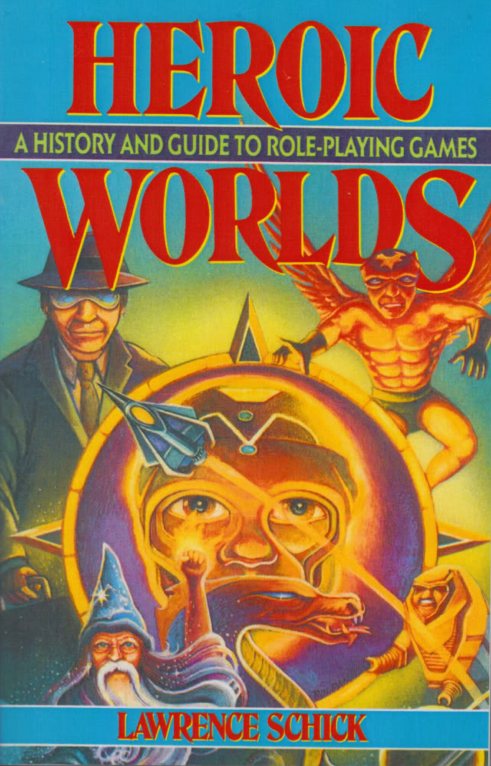
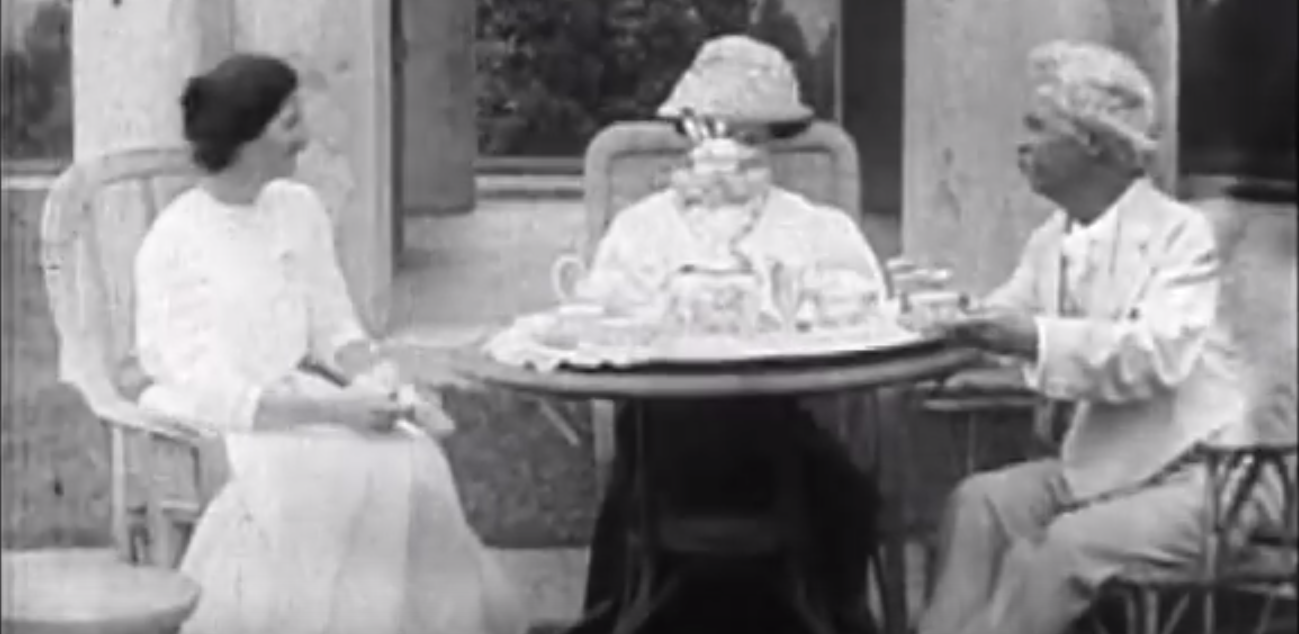

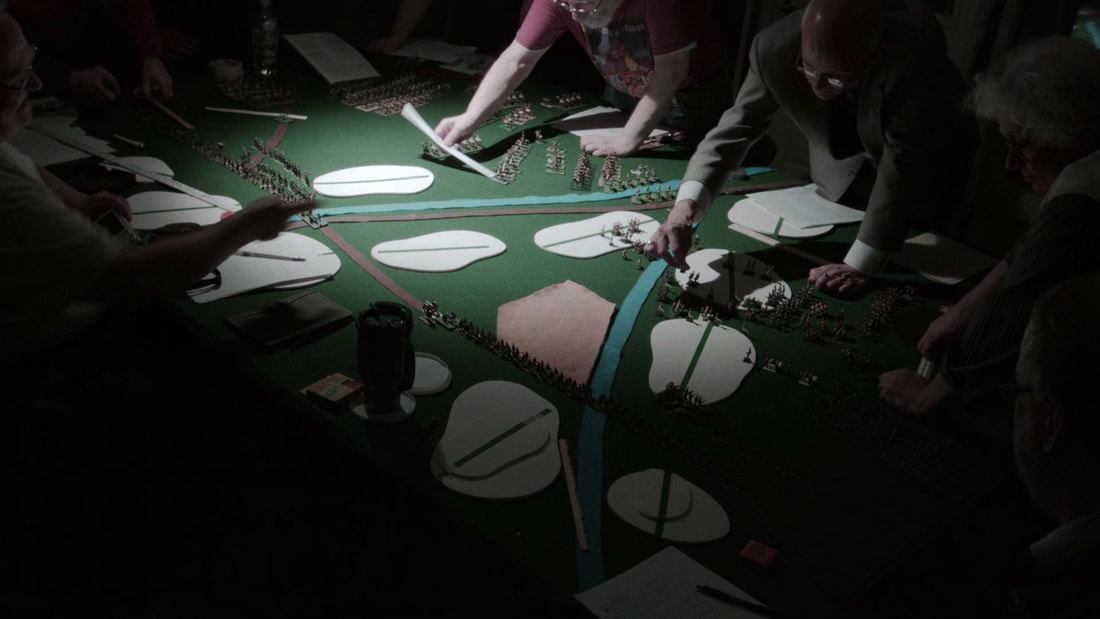
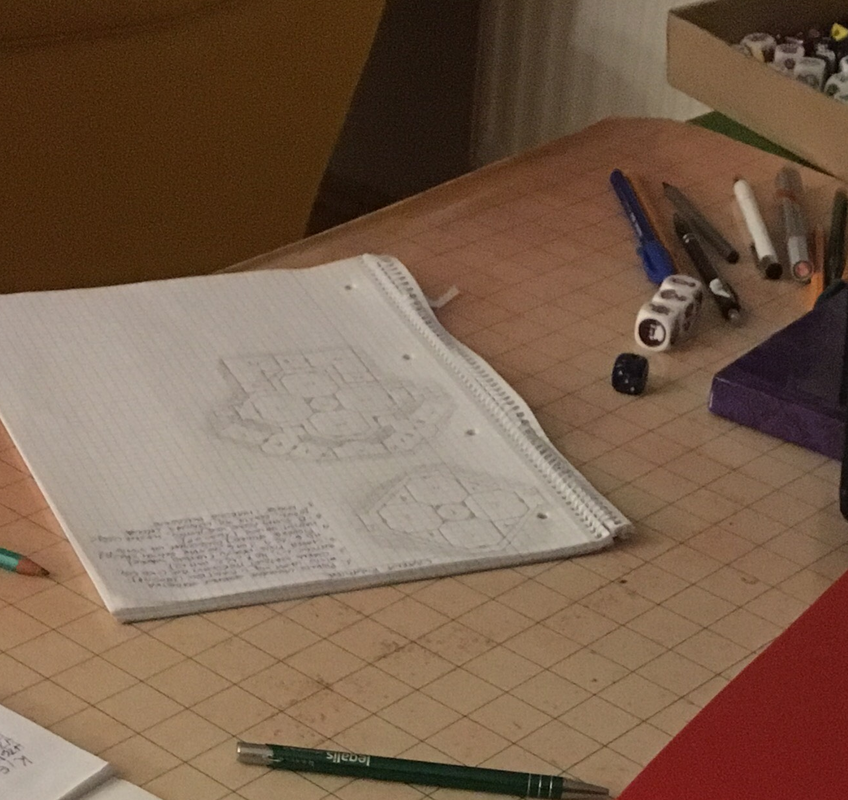
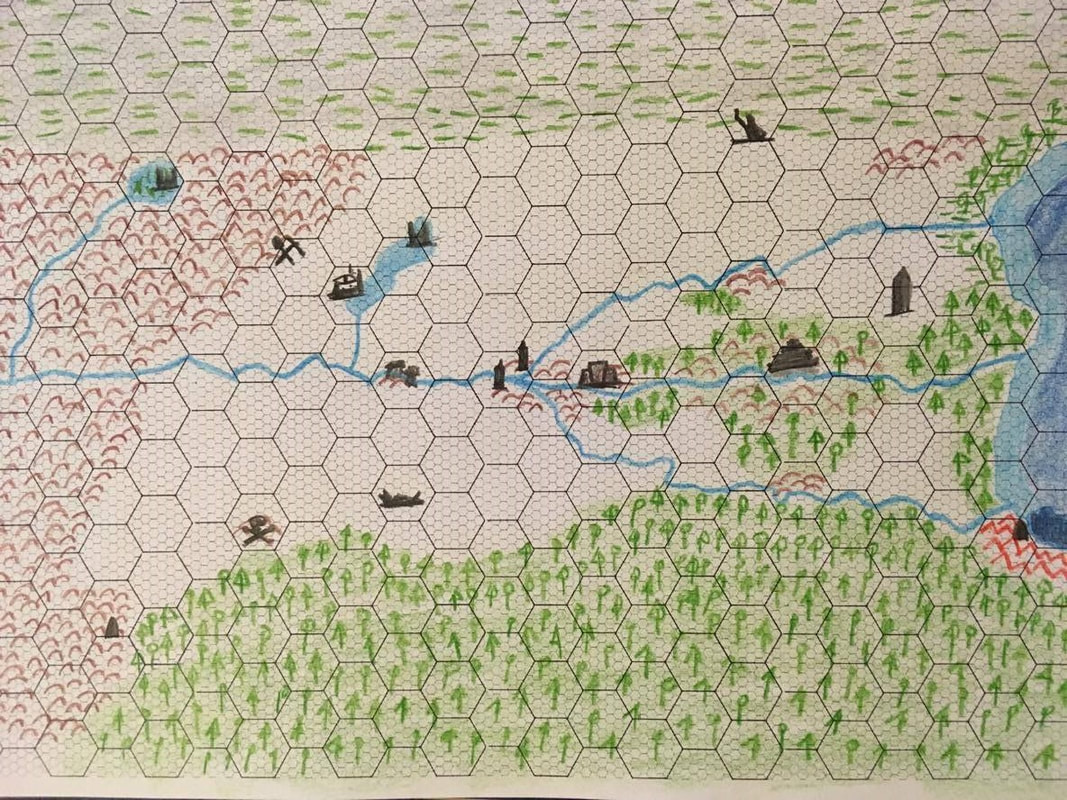
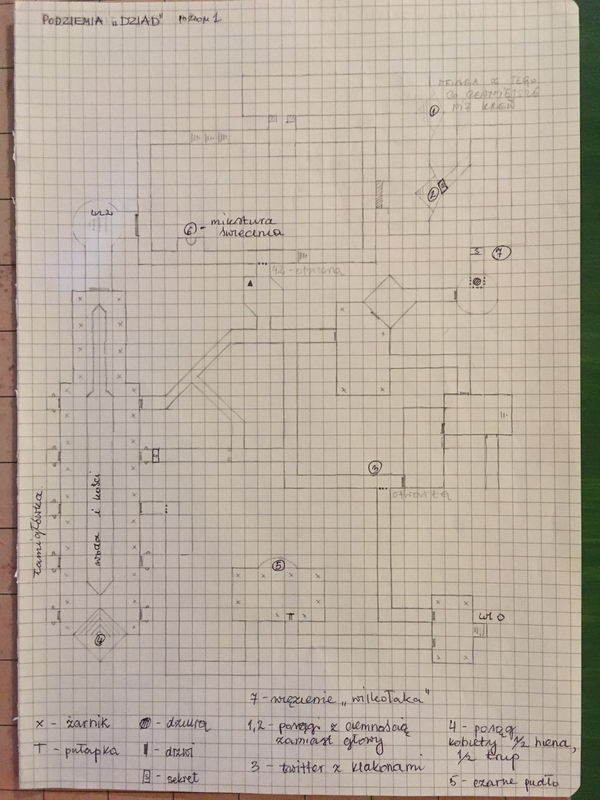
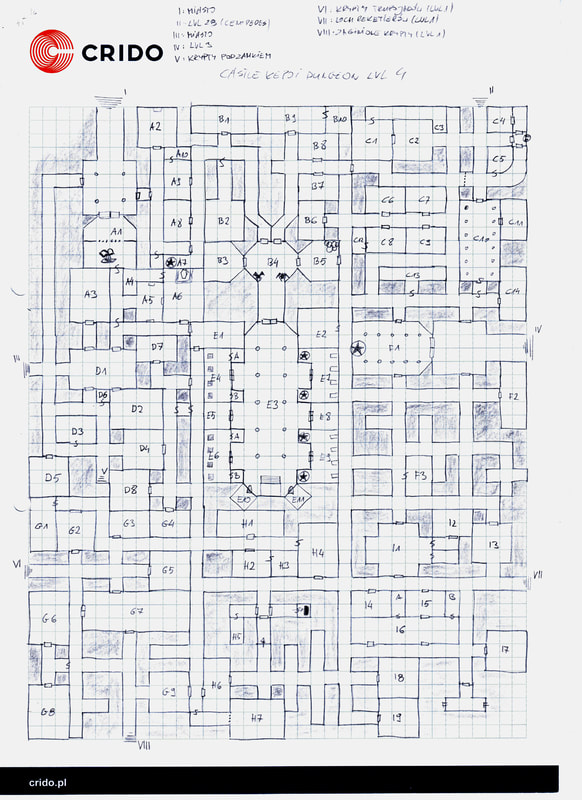
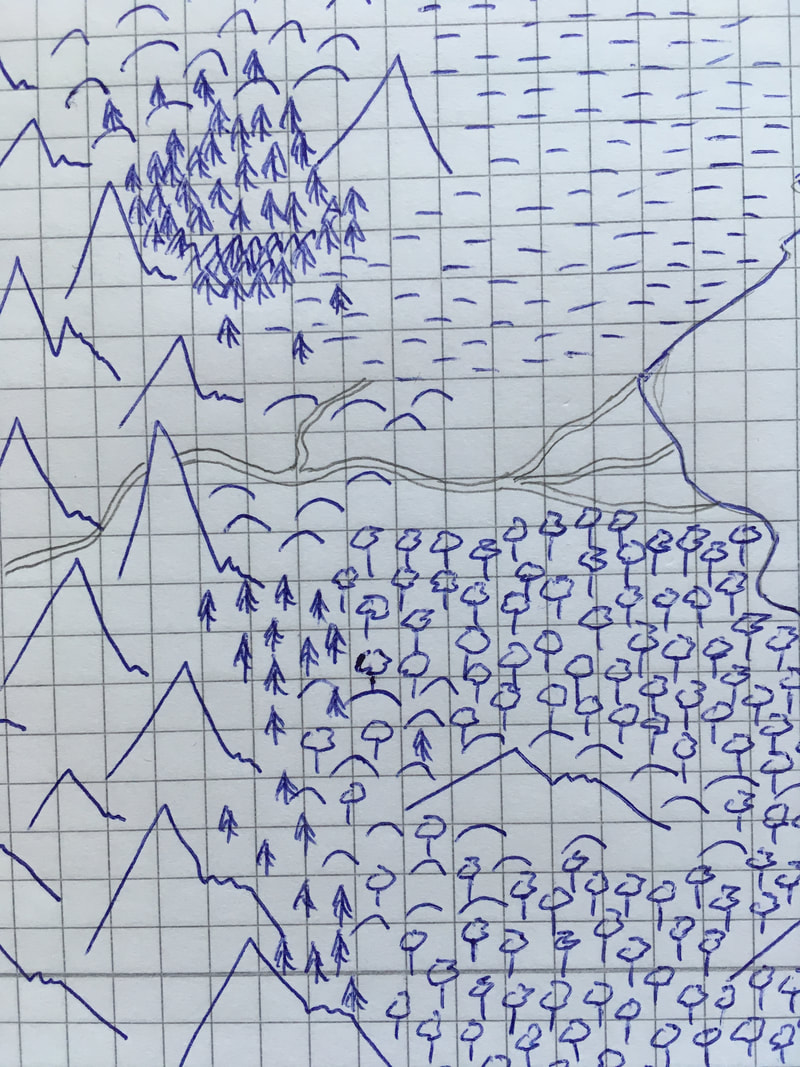

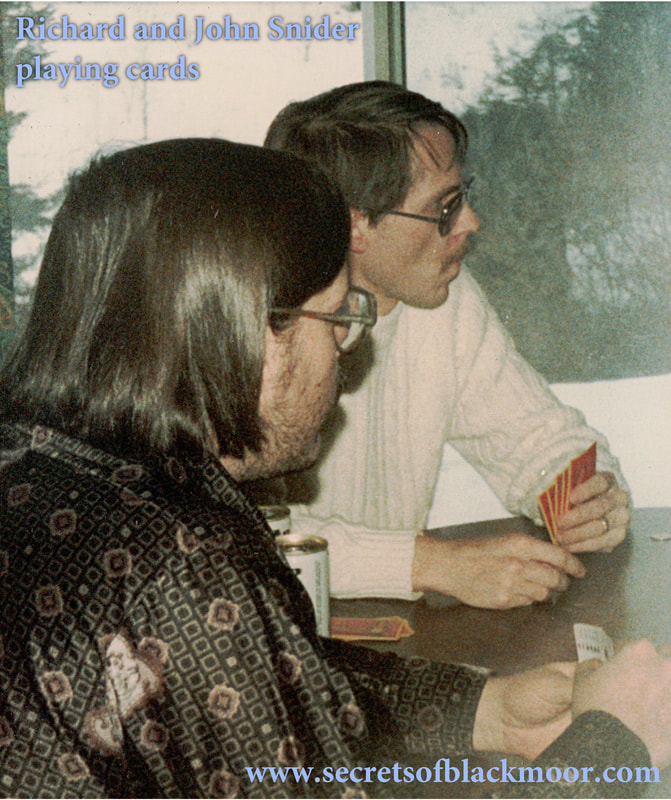
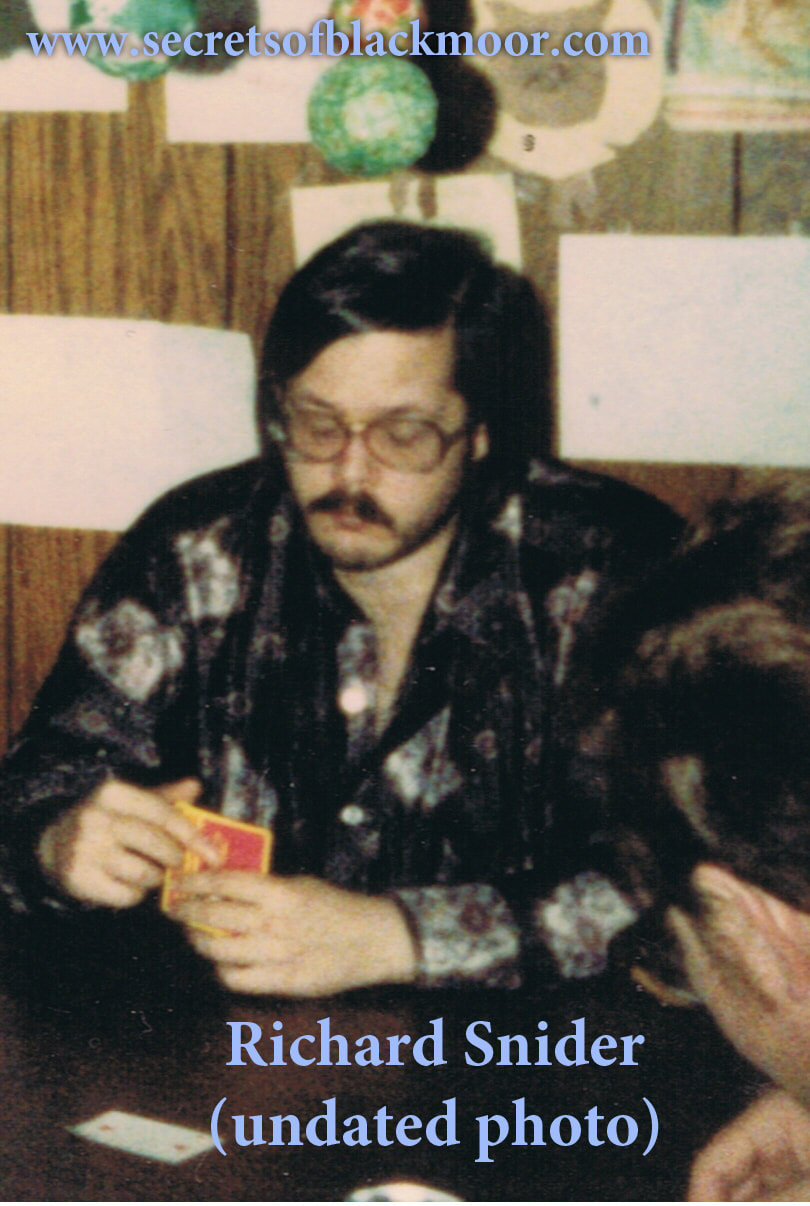
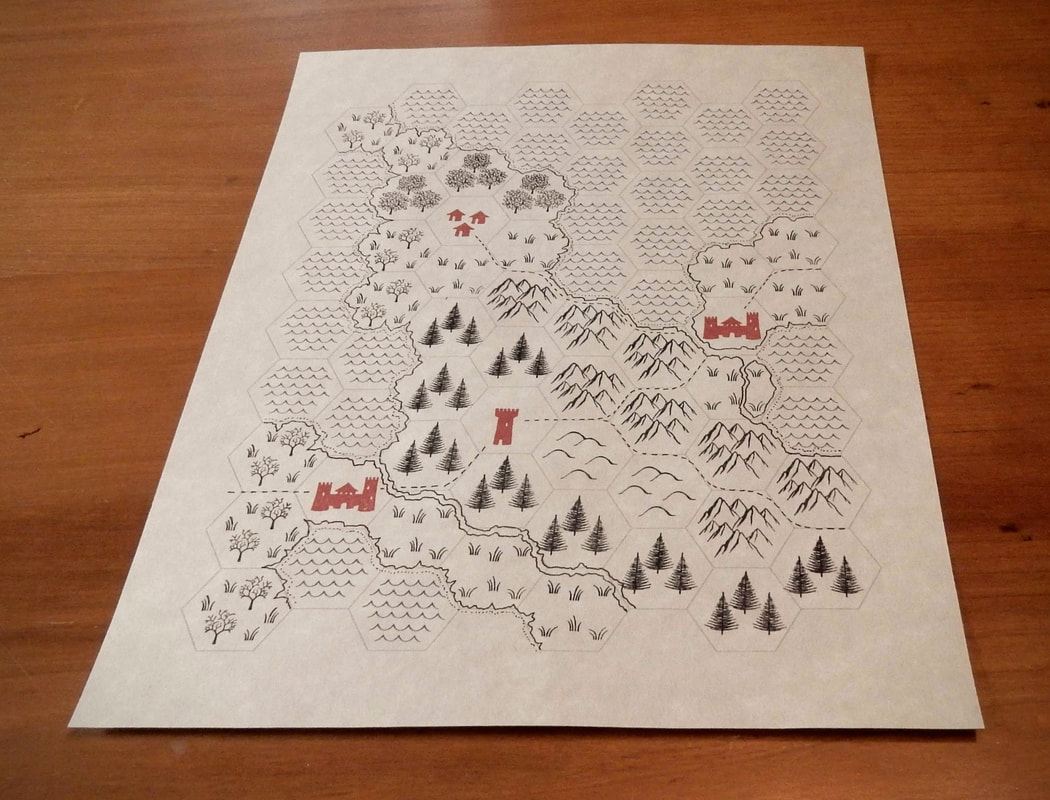
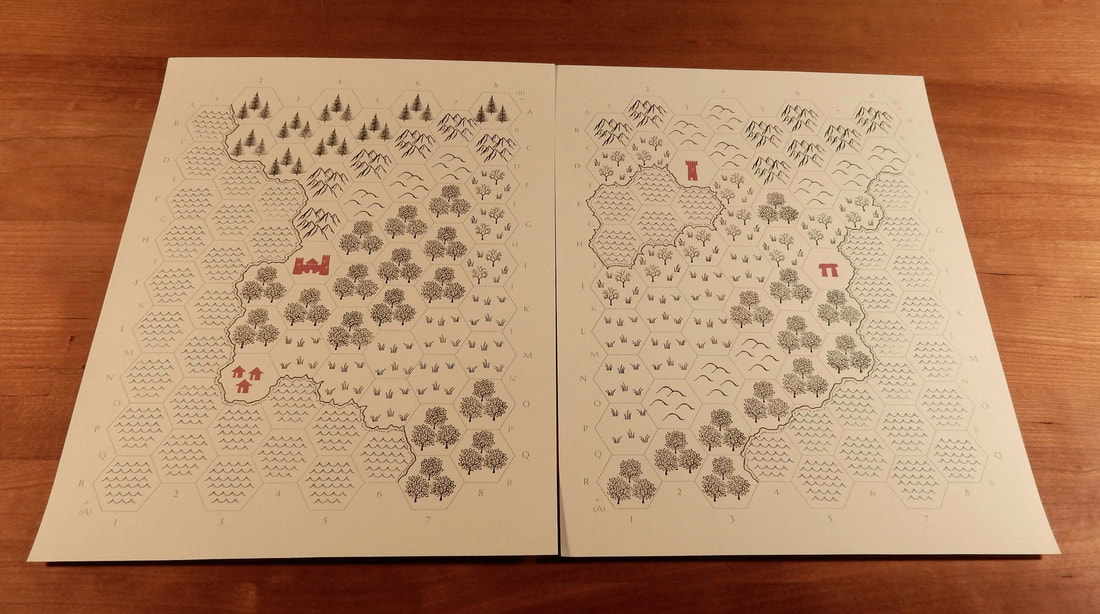
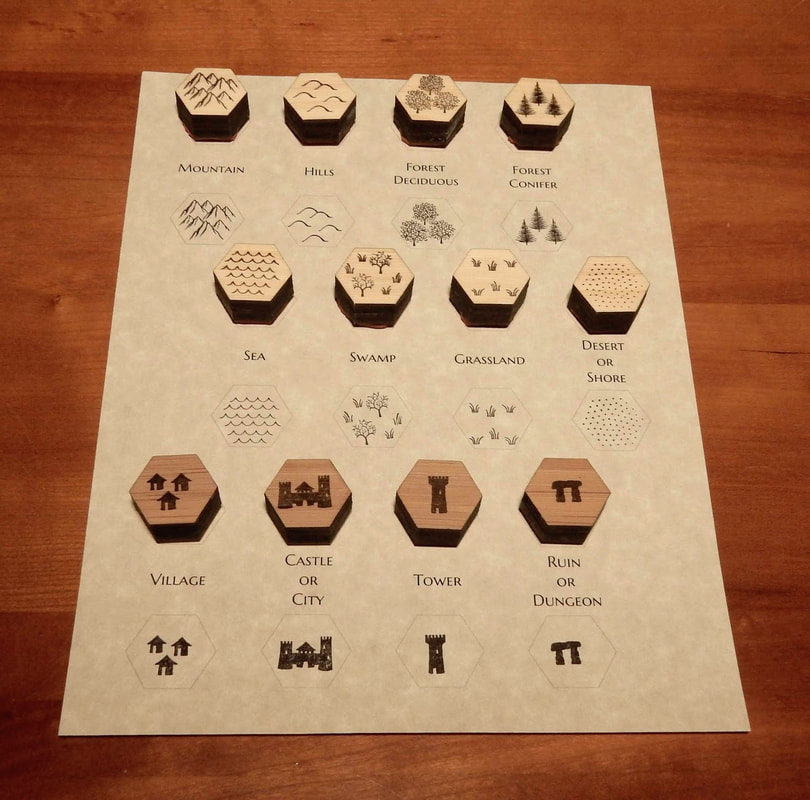
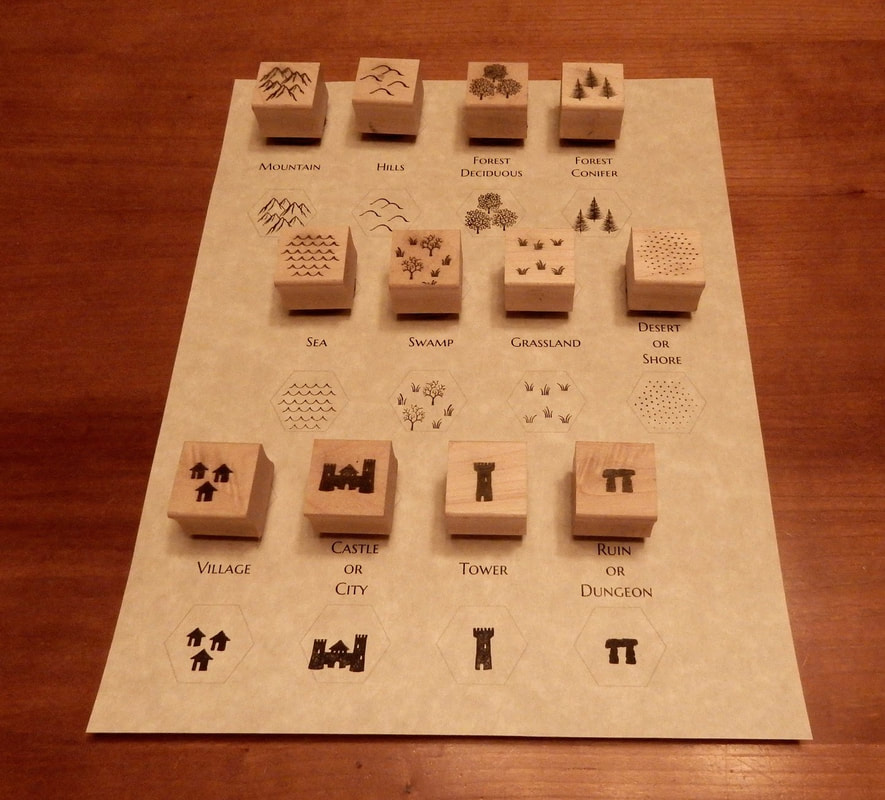
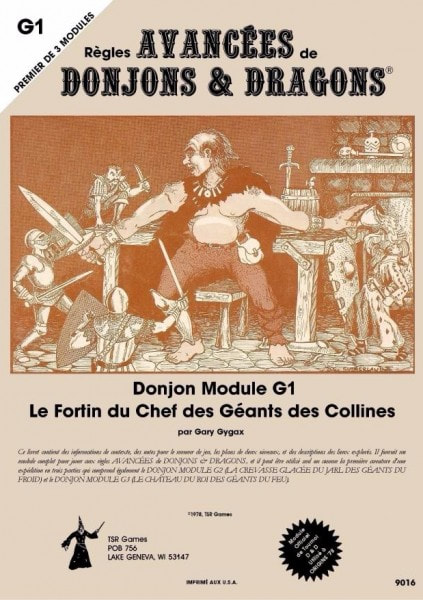
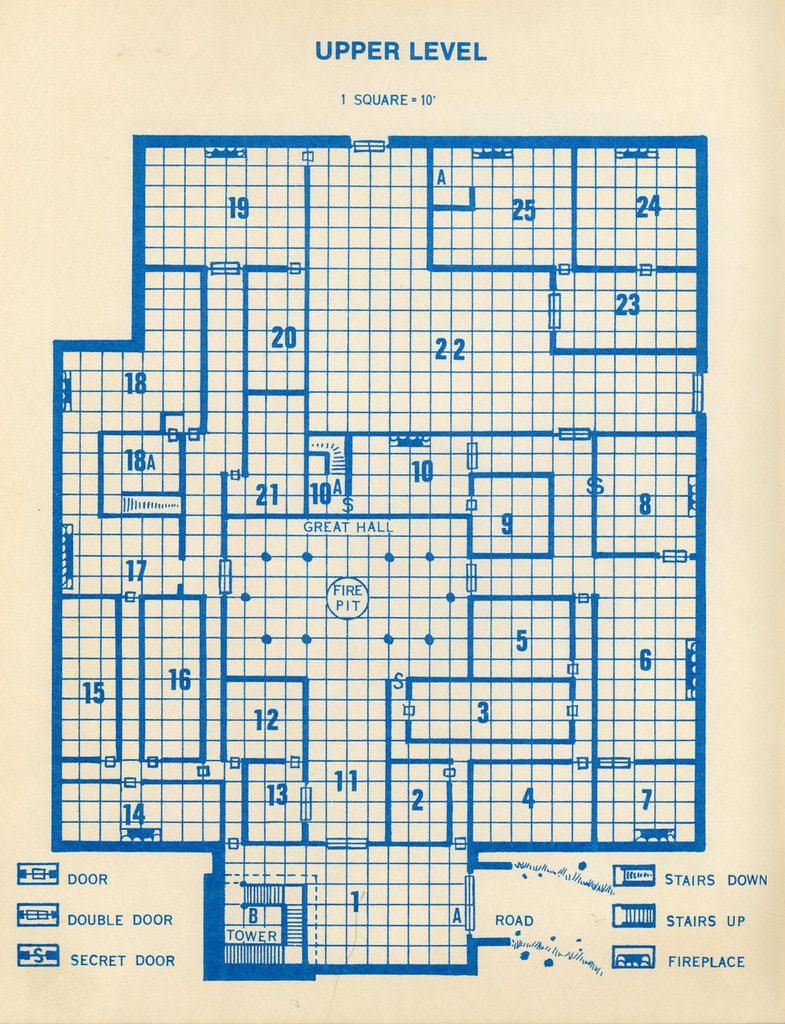
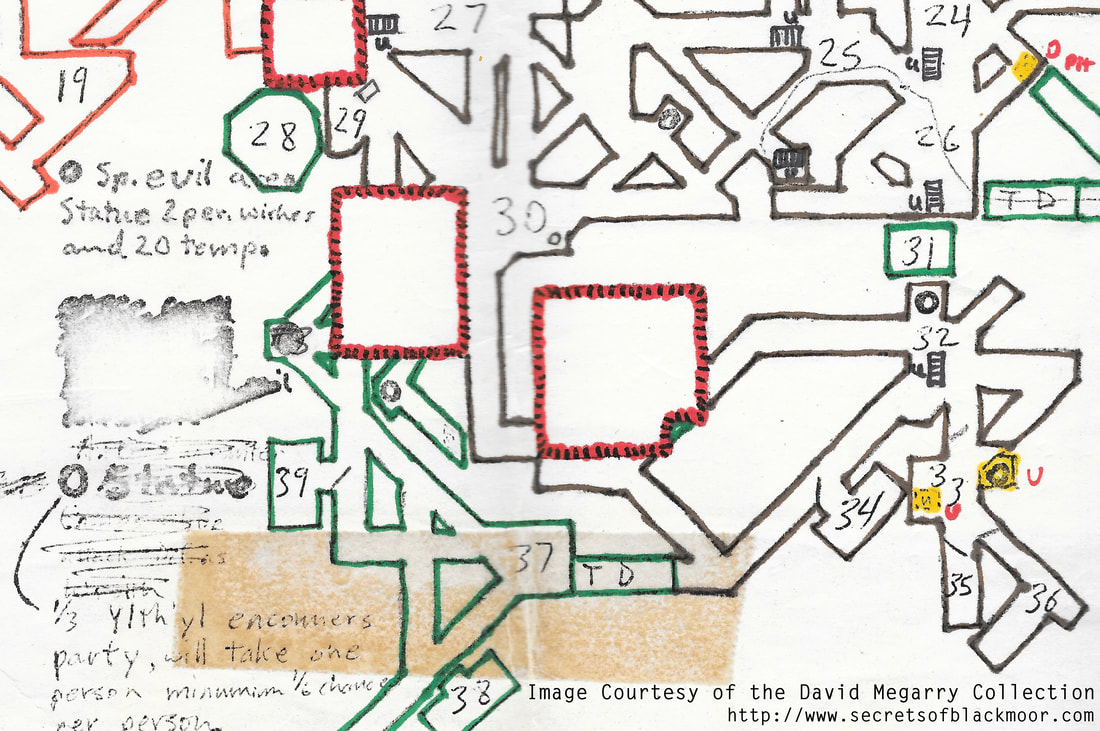
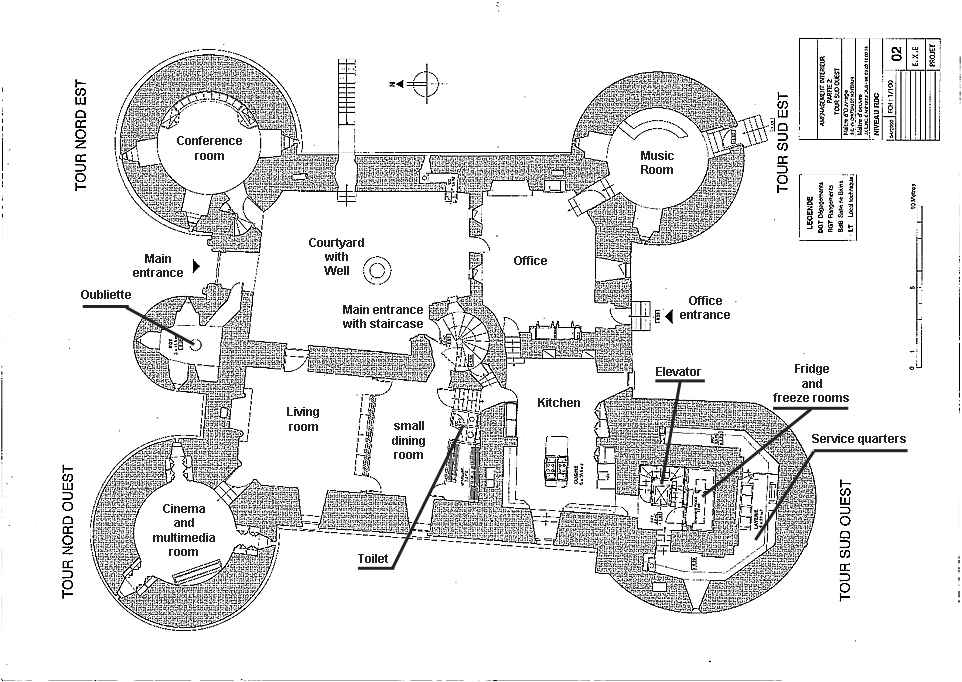
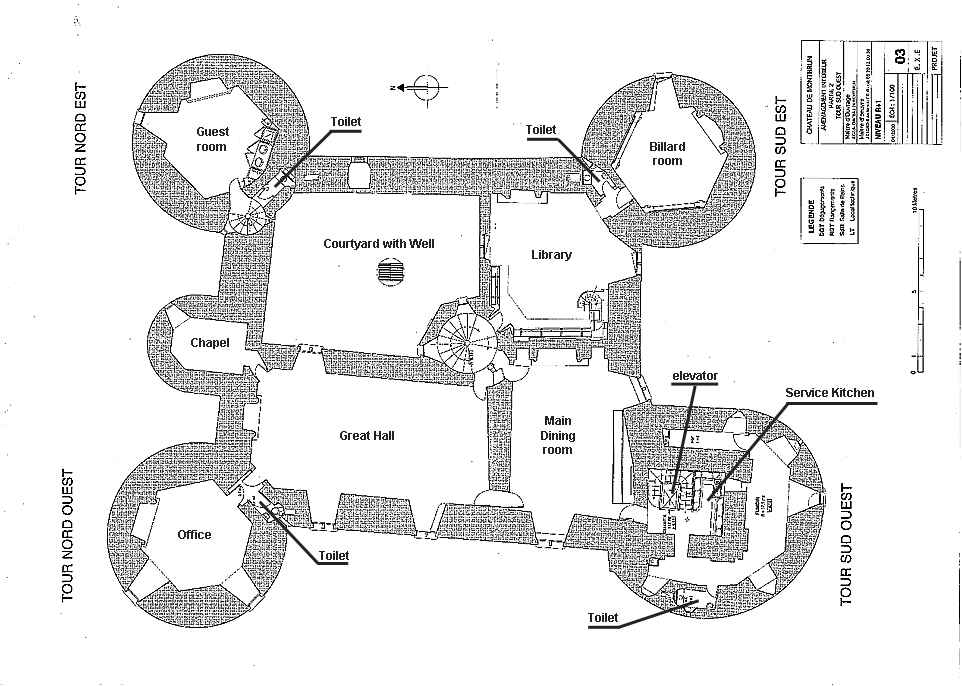
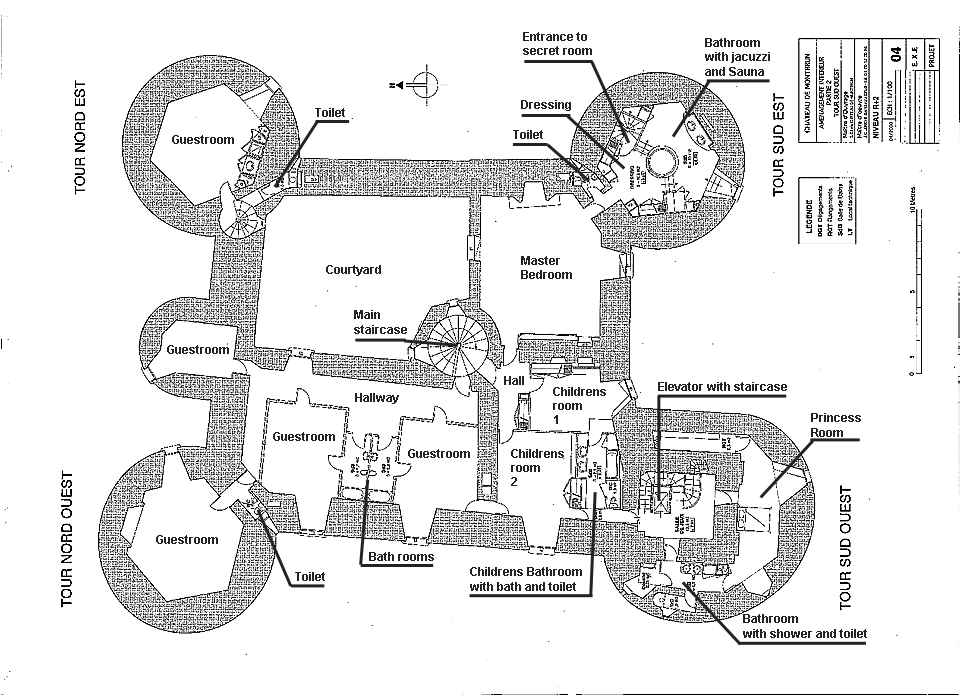
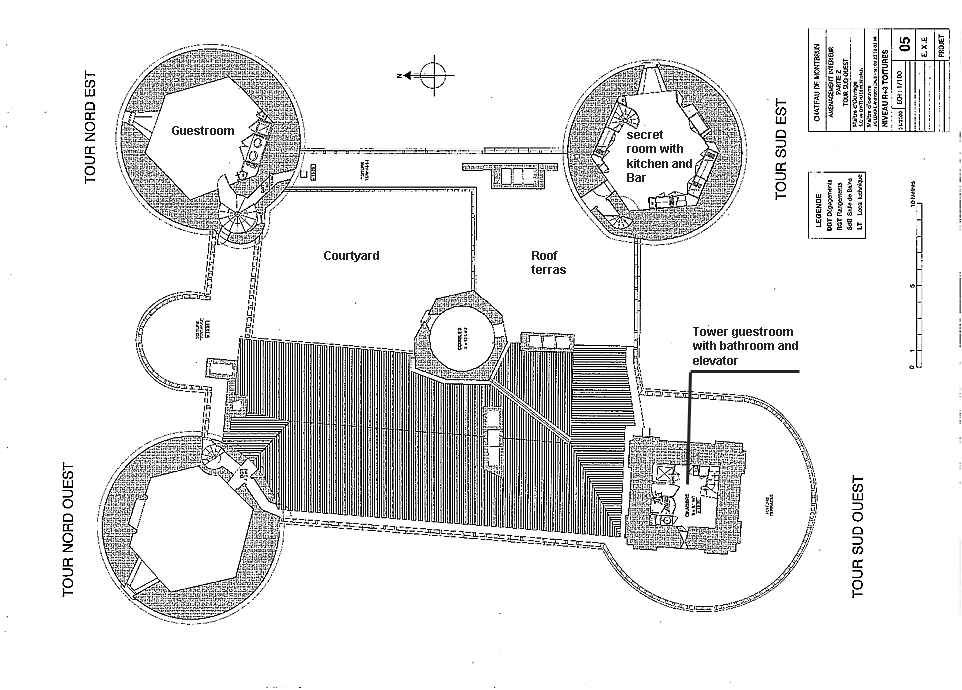
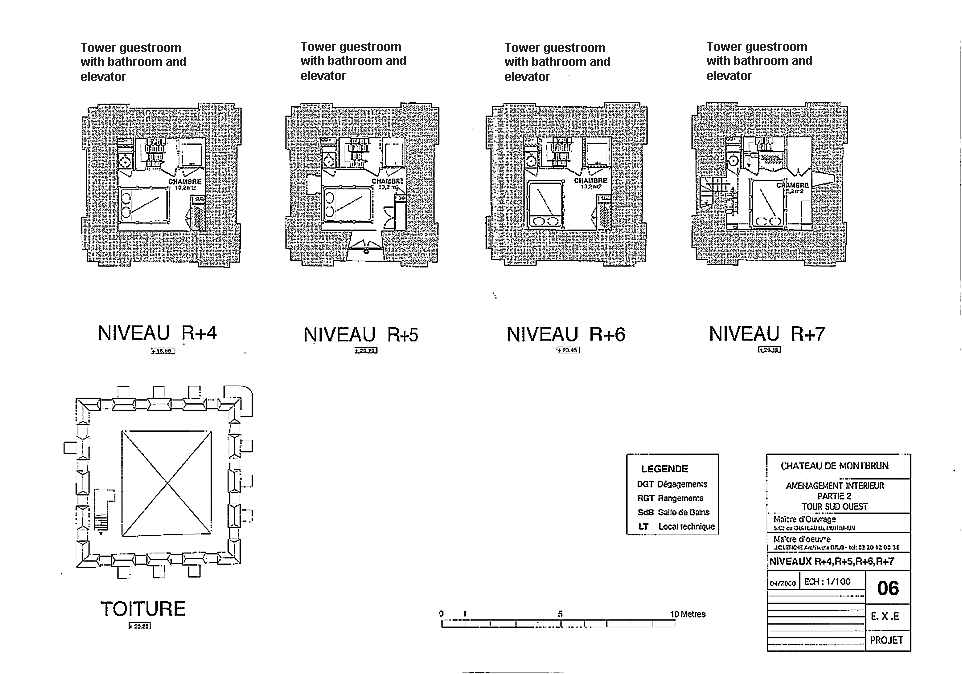
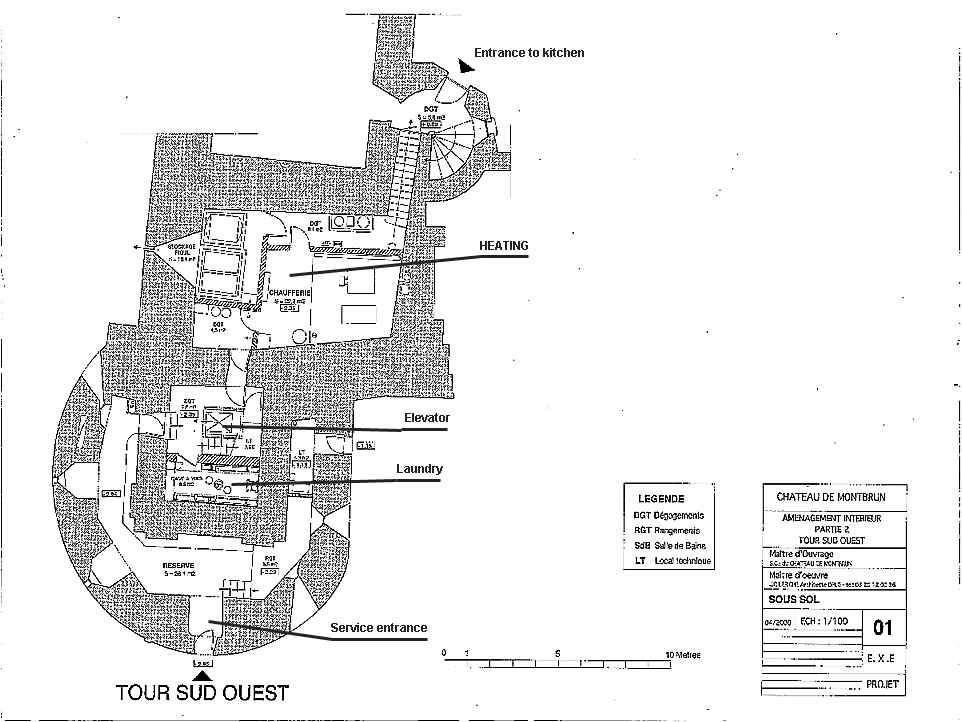
 RSS Feed
RSS Feed